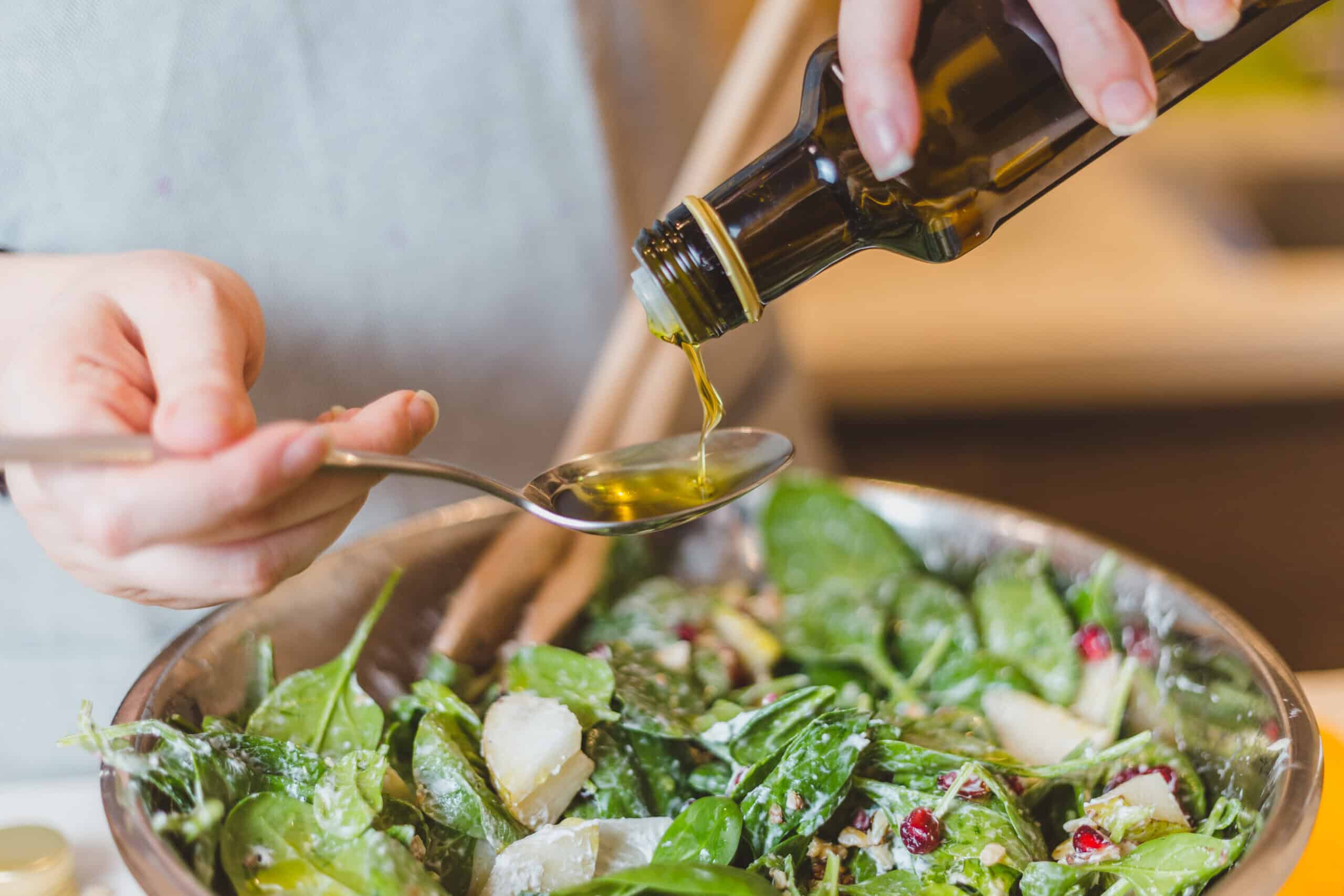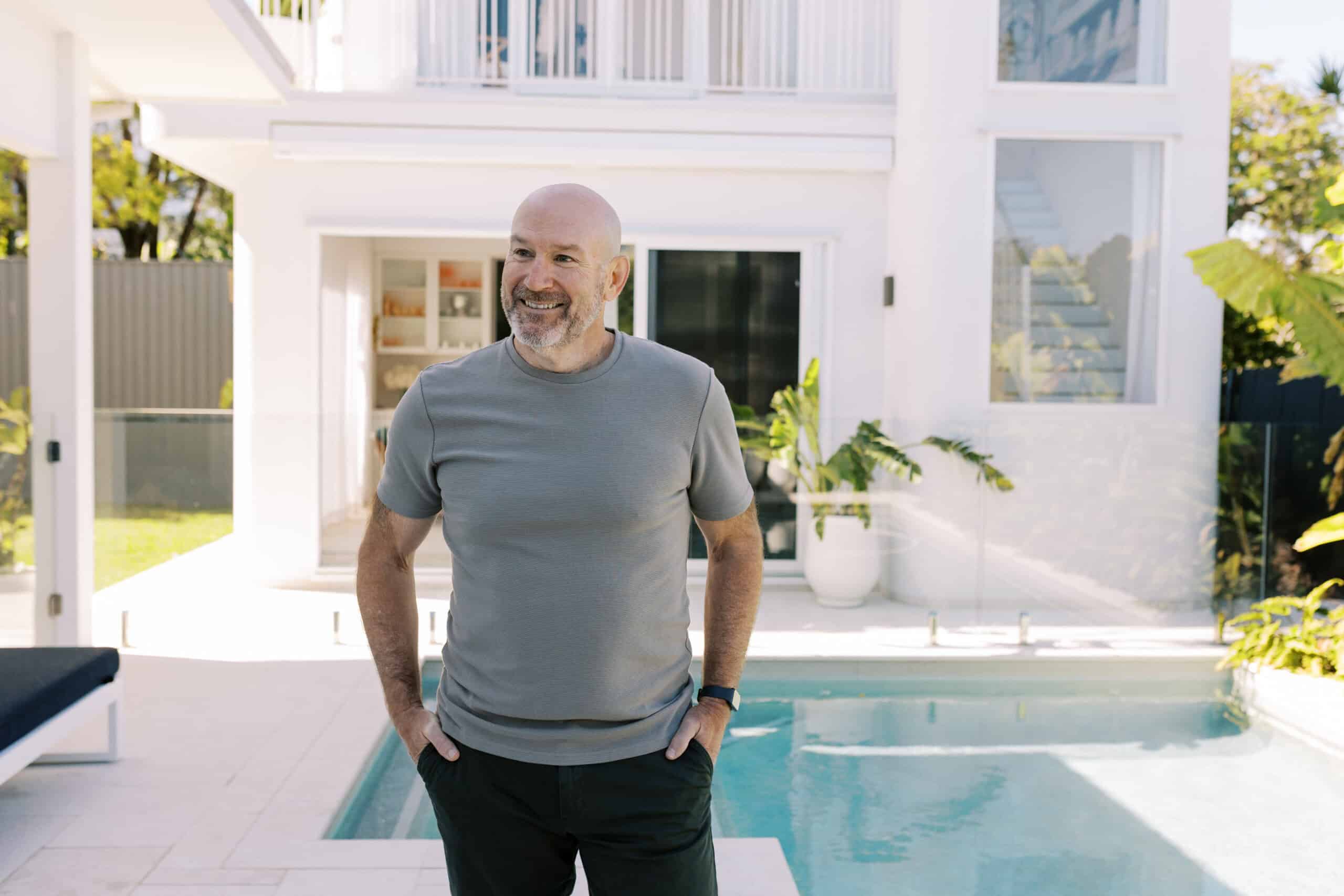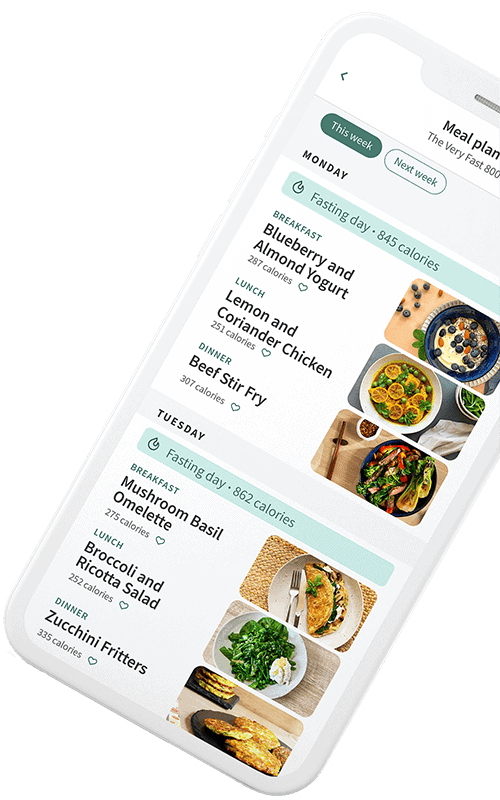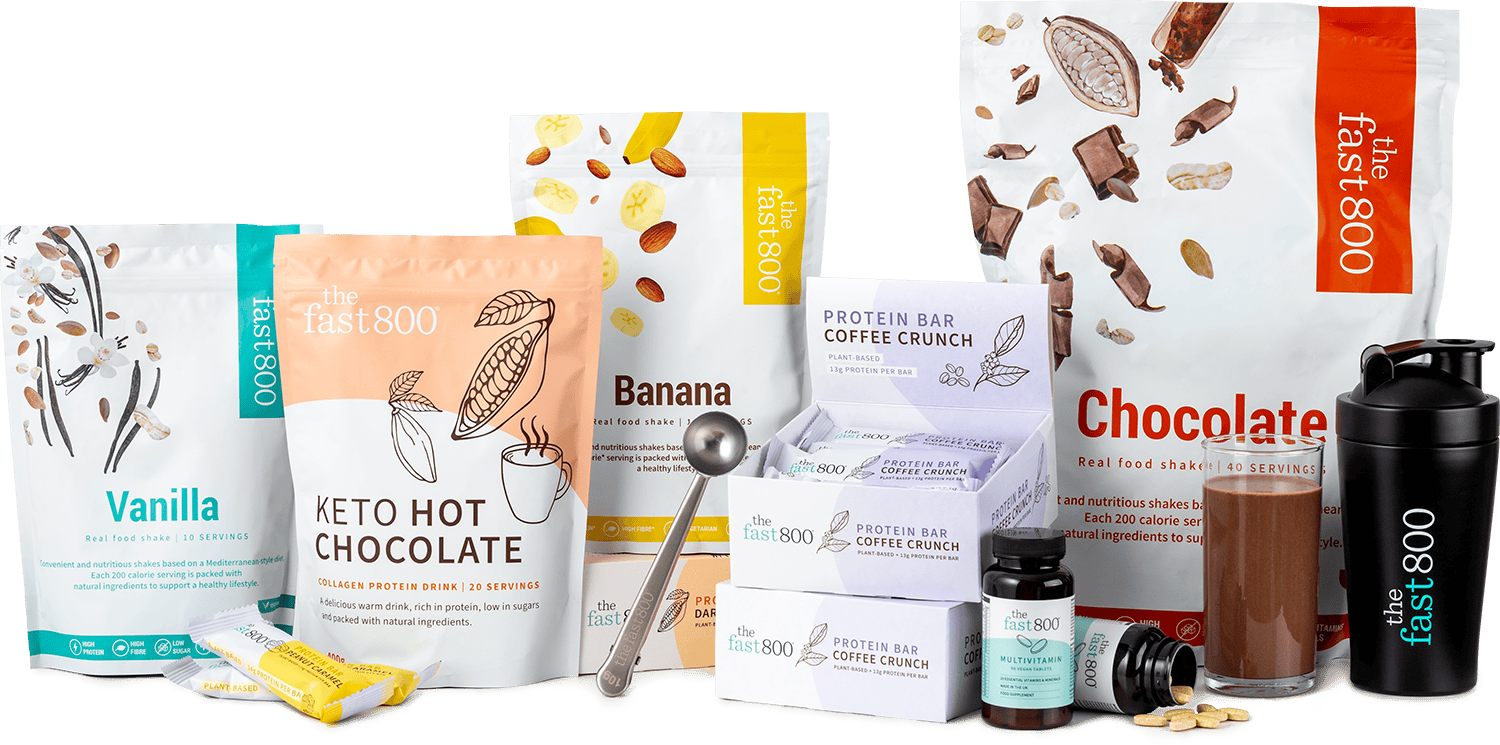Top exercise myths by Dr Michael Mosley
We all know that exercise forms an important part of a healthy lifestyle. However, there are lots of misconceptions about exercise, including conflicting advice around how much time we need to spend exercising and what type of exercise is most effective.
We’re here to break down some of the myths around exercise, so before you spend hours sweating it out in the gym, have a read of the below.
Myth 1: If I work out, I can eat lots more
Let’s get one of the most persistent myths out of the way first. That exercise is a good way to burn calories. This is one of the oldest and saddest myths around. Sad because it isn’t true.
The problem is that thanks to our evolutionary past, when food was scarce and our ancestors were active, our bodies are incredibly efficient at doing things like walking or running. You have to do a lot of either to burn even a small number of calories.
A while back I went to Loughborough University to find out just how many calories I burn while running.
I wore special monitoring equipment and set off at a brisk pace round the track. I wasn’t exactly threatening any Olympic records, but I was going fast enough to feel relieved when, after 10 minutes, I was told I could stop.
It turns out I had consumed around 16 calories a minute, which meant that having run just over a mile I had burnt through a grand total of …. 160 calories. Not bad, I thought. But put it in perspective. A small bar of chocolate contains about 240 calories, while a chocolate muffin comes in around 500 calories. So if you decide to have a muffin and a medium latte (150 calories) after your run then you are topping yourself up with 650 calories.
So, whilst exercising is a great way to stay healthy and fit, it shouldn’t be substituted for healthy eating; they need to go hand in hand. So go for that run, but leave the muffin alone.
Join our email community
Learn more about The Fast 800 approach to healthy living by receiving our free content, health tips and recipes as well as exclusive offers, delivered straight to your inbox.
Myth 2: The more you exercise, the better
Many people think that to get fit they have to run for hours on end or commit to long and enduring fitness classes. I used to be of the opinion “the more exercise the better”, until I was introduced to High Intensity Interval Training (HIIT) seven years ago while making the BBC Horizon documentary “The Truth about Exercise”.
During this documentary, I committed to three lots of 20-second high intensity workouts on an exercise bike, three times a week. During this time my insulin sensitivity improved by 24%.
In the documentary, we also saw very impressive results with younger, unfit people. The biggest problem with exercise is compensatory eating and relaxing afterwards. People go on a treadmill for 30 minutes, burn around 120 calories, then lie around and reward themselves with a muffin. The theory with HIIT seems to be that it suppresses your appetite, so that this is less likely to happen.
Researchers have also learned that unlike normal-intensity exercise, HIIT directly targets visceral fat, burning away the fatty deposits that can lead to insulin resistance and type 2 diabetes.
Recently, studies have also shown that as well as improving fitness, HIIT can actually reverse the effects of ageing on the mitochondria – the power-houses of the cell. As we age, the ability of the mitochondria to obtain energy by burning glucose declines. In tests, however, HIIT boosted the performance of mitochondria by 49% in people aged 18-30, and by a stunning 69% in people aged 65-80.
Myth 3: Stretching before you exercise will prevent injury
It’s a widely believed that static stretching — the kind that involves holding a movement, such as bending over and touching your toes— makes your muscles more flexible, primes them for activity and reduces the chance of injury.
But is it true? Probably not. In a review article in Sports Medicine, “Stretching and Injury Prevention” the authors concluded that if the sport you are doing involves a lot of stop-start (i.e. football) then you might get some benefit from stretching. If you are running, jogging or swimming then the overwhelming evidence is that stretching has “no beneficial effect on injury prevention”.
If you want to stretch before you start, make it dynamic, with movements such as arm circling and side-stepping. Dynamic movements send a message from the brain to the muscles saying, “we are ready to work out”. Static stretching, in contrast, triggers an inhibitory response in the brain. For sports like football dynamic stretch might mean a bit of ball kicking and dribbling.
Myth 4: If you don’t exercise when you are young, you have to go gently when you are older
A couple of years ago I ran a section of the London Marathon. This was pretty remarkable as I don’t like running. Even more remarkable, however, was that I was running with Fauja Singh, also known as “the turbaned tornado”. At 103, he is the world’s oldest marathon-runner.
Fauja, who was born in the Punjab in May 1911 only took up serious running at the age of 83. He ran his first race, the London Marathon, when he was 89. He once set 5 world records for different distances for his age group in a single day. Back in 2012 he managed to run the Marathon in a bit over 6 hours. I’m ashamed to say I did a section, then it started to rain, so I took the tube. I was, however, at the finishing line to cheer him on.
What Fauja illustrates, in a particularly dramatic way, is that it is never too late to take up exercise. At that marathon there were more than 7,000 runners over 50, and seven who were over 80.
Clearly people who are older need to take thing more gently when they start, but there is a persistent and overstated fear that exercise in later life will lead to heart attacks and strokes. The reverse is true.
I have previously written a study done with a group of unfit volunteers aged between 65 and 75 who were asked to do very short sessions of high intensity exercise on an exercise bike. Just two minutes a week was enough to produce some impressive changes.
Myth 5: The best time to exercise is first thing in the morning
This is a tough one, because while there are advantages to exercising first thing, there are also advantages to exercising later. There is some evidence, for example, that exercising before breakfast (i.e. in the fasted state) leads to more fat burning, but if you are interested in performance, then late afternoon or early evening may be a better time to work out.
Why? Well, your body temperature is lowest first thing in the morning. It then steadily rises by about 1 degree Celsius till it reaches a peak around midday. It stays quite high till about 7pm, when it starts to fall. Being slightly more revved up with warmer muscles can contribute to an improvement in performance. It may also reduce the risk of injury. On this basis exercising any time between midday and 7pm is good. Much later and it may disturb your sleep.
I do a mix. I do strength exercises like push ups and squats first thing, when I roll out of bed. I get my aerobic exercise by running up and down seven flights of stairs at my office during the day and by doing short 20 second bursts on my bike as a toil up the long steep hill back to my house in the evenings.
Myth 6: Exercise puts you in a good mood
This is a widely held belief that I wish was true but may not be. It is certainly true that people who do lots of exercise report feeling happier (smugness?) and plenty of people get a real kick out exercise. The popular explanation for this is “endorphin release”, something I have never experienced.
The trouble is that while exercise does trigger a release of endorphins, in some people, it unlikely to make them feel euphoric. Endorphin molecules are too large to cross the blood-brain barrier and actually reach their brains. There could be other explanations or it could be that exercise isn’t quite the mood booster it’s claimed to be.
In a recent review of 39 trials carried out by the Cochrane Database of Systematic Reviews the authors concluded that, “exercise is moderately more effective than no therapy for reducing symptoms of depression”, but that “the evidence about whether exercise for depression improves quality of life is inconclusive”.
The evidence is actually much stronger for the positive impact on mood of time spent being active outdoors, particularly in a green environment. Going for a run or walk in the park is more likely to cheer you up than doing the same exercise in a gym.
Myth 7. Doing ab workout and crunches will get rid of body fat
If you want a six-pack, then exercise alone is not going to do it. You can have the best toned and muscular abs in town, but no-one will see them if there is a layer of fat covering them.
Achieving a six pack requires dieting and lots of varied abdominal exercise. You will need to do a regular programme of sit ups, crunches, leg lifts, butt ups, the dreaded plank and pulls ups.
Myth 8: Isotonic drinks are the best way to rehydrate
There is a large and lucrative market in expensive isotonic sports drinks. They are sold as a quick and effective way to quench thirst, rehydrate and provide energy. So do you need them?
Unless you are working out for a long time and dong a lot of sweating then the short answer is “no”. They are mainly sugar and are simply adding a lot of unnecessary calories. If you are thirsty then water will do the job.
Even if you are a serious sportsperson the best option is probably milk. In a study published in the British Journal of Nutrition (“Milk as an effective post-exercise rehydration drink”) they got eleven volunteers to lose 2% of their body mass by exercising in a warm environment, then gave them fluid replacement, either skimmed milk, water or an isotonic sports drink. Then they measured how much they peed. Over the next few hours only the milk drinkers stayed “in net positive fluid balance”. The others continued to dehydrate.
A recent study carried out with children as McMaster University in Canada came to similar conclusion.
“Milk is better than either a sports drink or water because it is a source of high quality protein, carbohydrates, calcium and electrolytes”.
Milk is, surprisingly enough, a good way of replacing sodium, which is lost in sweat. This is not a good option, of course, if you are lactose intolerant.











